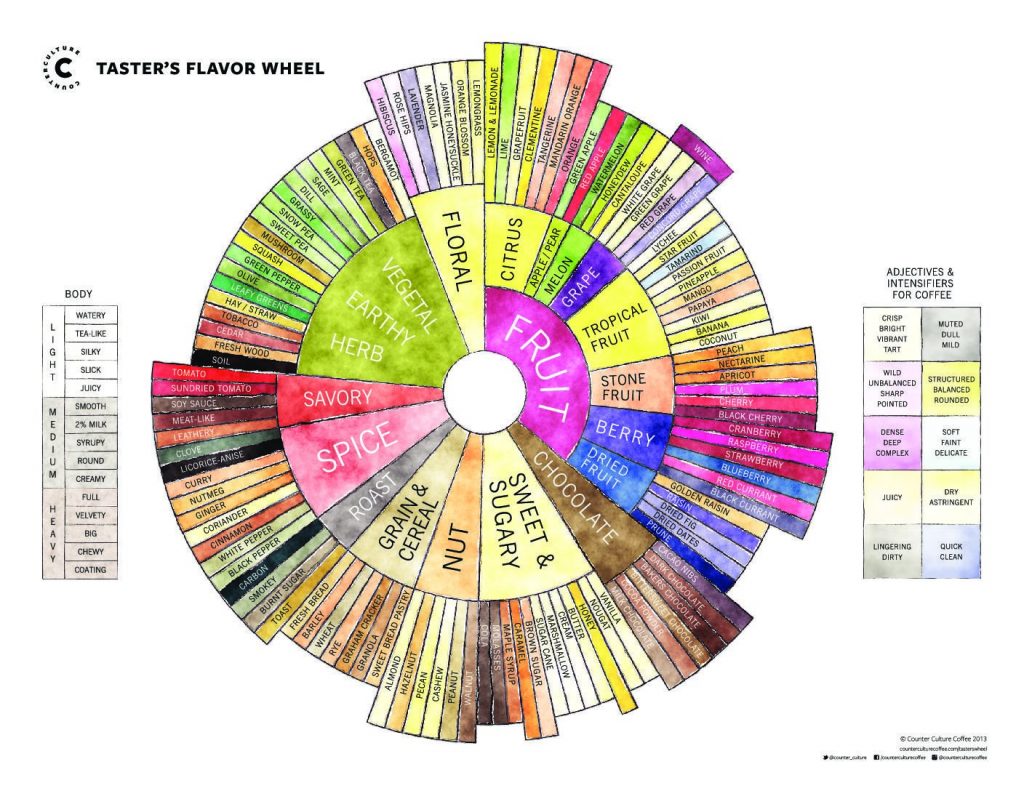Coffee is a culture and experience involving more than just drinking. It involves everything related to the art form, including harvesting, roasting, and brewing the perfect cup. “Third wave coffee” is the phrase used to define this movement, one where, unlike other waves, involves a focus on important aspects, such as fair trade and a deeper appreciation for taste, not so different from wine tasting.
The third wave is not a cup of coffee so much as it is about delivering the best in all aspects. It’s a revolution; a way of thinking. This goes without saying that third wave involves specialty coffee—that’s a given. Especially when taken black, a great cup takes you on an adventure. Each batch of beans, brewing method, and even water temperature gives a variety of taste notes and textures not found in your typical cup. Even with milk, different flavors come out.
It’s not uncommon to encounter prominent notes such as fruits, nuts, and, heck, even peanut butter, depending on the coffee beans you’re trying out. Next time you drop by a shop that offers third wave, pay more attention to the drink—resist the urge to put sugar. Slurp the drink so its flavors spread across the entirety of your palate. Check out the wheel below, courtesy of Counter Culture, and try to dissect the flavors, body, aroma, and aftertaste of your drink. If the cup is good, you should be able to tell.

The espresso is probably the most popular form of brewing method. It involves tightly packed grounds with hot water pushed through—it’s the foundation of several well-known drinks, such as the Americano and the cappuccino. The espresso, when taken as is, produces a flavorful, cakey, and concentrated cup.
Other well-known brewing methods include the pour-over and the AeroPress—all these bring out different aspects of the coffee, so part of the fun is trying them all out.
You’ll also come across the terms “single-origin” and “blend.” The former basically means coffee sourced from a single location, while the latter means a combination of coffee from various select places, in different percentages, merged to create a signature cup—as trademark for a café, perhaps. The quality of beans will depend on various factors—altitude, climate, and temperature, for example.
Being huge coffee buffs, we love trying different kinds of coffee. Goodness knows how much we drank last 2018! Listed below are some of our favorites.
The Satchmi Blend
Why, of course, our very own! Our blend is a medium roast containing a mix of single-origin from both Brazil and Indonesia. Again, to fully appreciate this, don’t forget to slurp. A cup of our blend produces taste notes of cocoa, nuts, and caramel. Upon serving, the first thing you’ll notice is the bittersweet flavors of the black coffee—a bit of dark chocolate undertones there, too. After about four minutes of cooling, the sweetness becomes more prominent until, around the eight minute mark, the peachy acidity starts hitting. As the brew cools even further, that peach turns into grapefruit.
Dutch Colony’s Finca Santa Isabel, Guatemala
The Dutch Colony Coffee Co. is a specialty roaster based in Singapore, priding themselves in delivering warmth and the unexpected. This single-origin offering comes from Finca Santa Isabel, 300 acres of land situated 1400 to 1600 meters above sea level. The company’s amazing roast produces flavors of maple, lime, and melon.
Blue Bottle Coffee’s Giant Steps Blend
Headquartered in Oakland, Califoria, Blue Bottle is a well-respected name in third wave coffee. This blend of theirs, named after jazz musician John Coltrane’s seminal record, is an interesting story in sound, containing beans from Uganda, Papua New Guinea, and Sumatra. Quite unique notes are produced by this cup—toasted marshmallows, cocoa, and graham crackers! Indeed, layers of different dimensions.
Common Man Coffee Roasters’ Gitwe Hill, Burundi
Straight out of Common Man’s Uncommon line, this lot from East Africa produces a juicy body and delicate finish. Flavors you’ll find, depending on brewing method, include stone fruits and floral notes.
Dryve Coffee’s Alberto Ulchur Colombia
Based in Jakarta, Dryve Coffee is a micro-roaster curating coffee from Indonesia and the rest of the world. These special single-origin beans were produced and wash-processed with care by none other than Carlos Alberto Ulchur. Taste notes for these Dryve beans include lavender, blackcurrant, and caramel.
Linden Coffee Roasters’ AA Kainamui, Kenya
Linden is an independent roaster based out of Slovakia, a country renowned for its coffee culture. This delicious lot from the slopes of Mount Kenya contains a prominently acidic tomato flavor, which is a regular characteristic for its origin. More fascinating is the delicate, flowery mouthfeel that takes over as the brew cools—a simple but pleasant experience.
Different folks experience various things when it comes to coffee—it’s a subjective journey, after all. Of course, there are guides serving as foundations and directions to push people in the right directions. When all is said and done, you need to ask yourself what exactly you’ve acquired from your own path. With enough exposure, you’ll come to develop an even more profound understanding for third wave culture, so head on over to one of our stores and get started!
Words by Kurvine Chua.